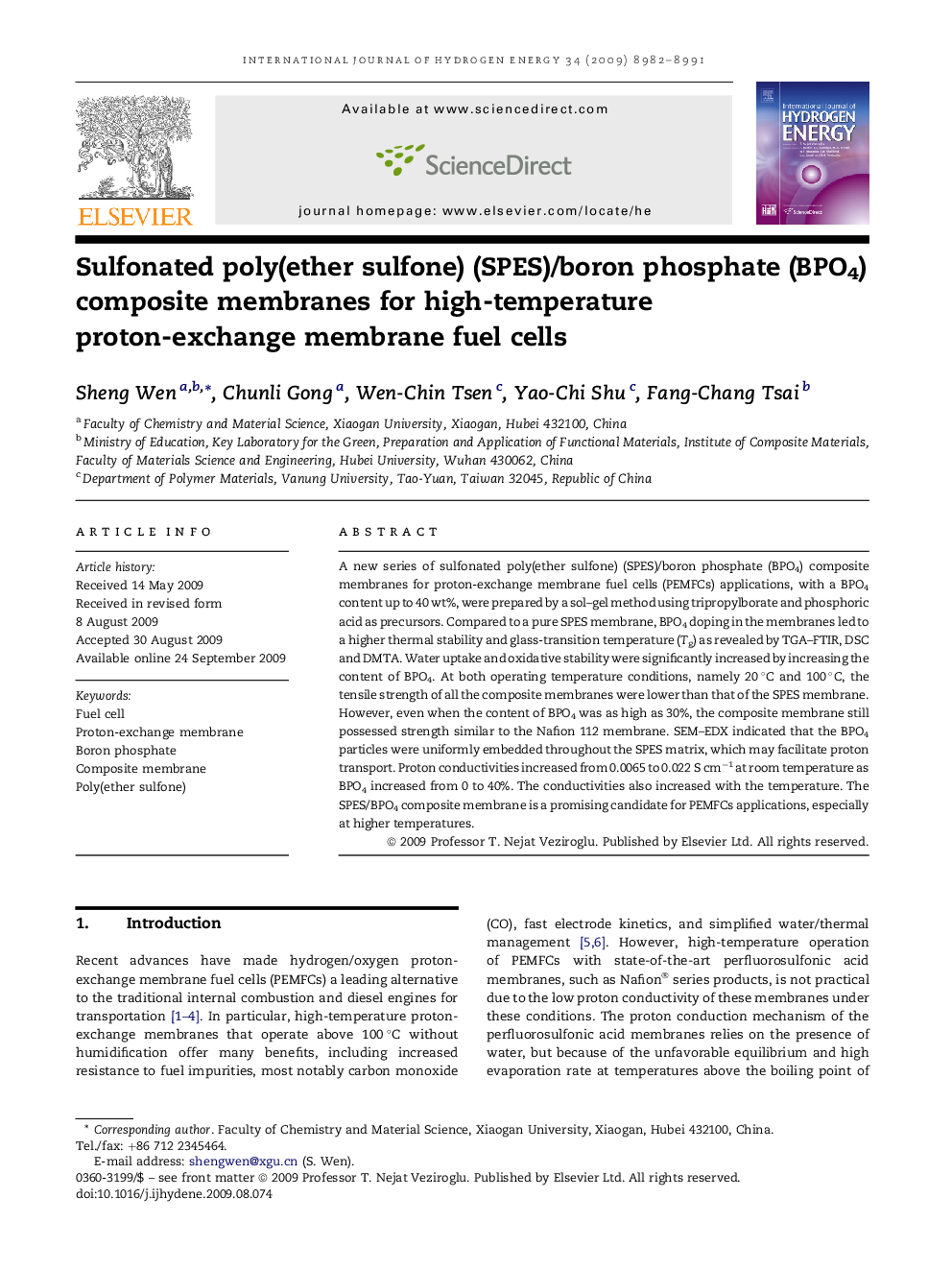| کد مقاله | کد نشریه | سال انتشار | مقاله انگلیسی | نسخه تمام متن |
|---|---|---|---|---|
| 1283031 | 1497620 | 2009 | 10 صفحه PDF | دانلود رایگان |

A new series of sulfonated poly(ether sulfone) (SPES)/boron phosphate (BPO4) composite membranes for proton-exchange membrane fuel cells (PEMFCs) applications, with a BPO4 content up to 40 wt%, were prepared by a sol–gel method using tripropylborate and phosphoric acid as precursors. Compared to a pure SPES membrane, BPO4 doping in the membranes led to a higher thermal stability and glass-transition temperature (Tg) as revealed by TGA–FTIR, DSC and DMTA. Water uptake and oxidative stability were significantly increased by increasing the content of BPO4. At both operating temperature conditions, namely 20 °C and 100 °C, the tensile strength of all the composite membranes were lower than that of the SPES membrane. However, even when the content of BPO4 was as high as 30%, the composite membrane still possessed strength similar to the Nafion 112 membrane. SEM–EDX indicated that the BPO4 particles were uniformly embedded throughout the SPES matrix, which may facilitate proton transport. Proton conductivities increased from 0.0065 to 0.022 S cm−1 at room temperature as BPO4 increased from 0 to 40%. The conductivities also increased with the temperature. The SPES/BPO4 composite membrane is a promising candidate for PEMFCs applications, especially at higher temperatures.
Journal: International Journal of Hydrogen Energy - Volume 34, Issue 21, November 2009, Pages 8982–8991